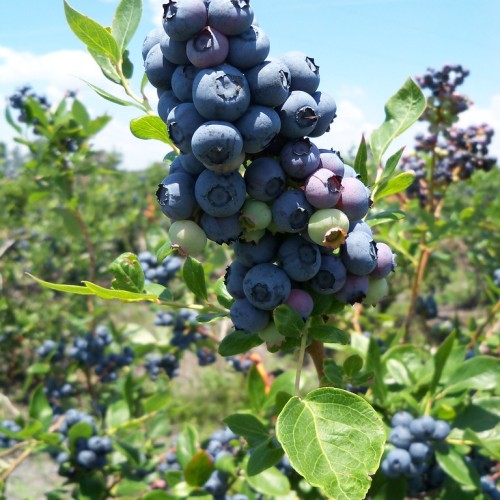
highbush blueberry
Vaccinium corymbosum 'Bluecrop'
Cycle:
Perennial
Watering:
Frequent
Hardiness Zone:
5 - 7
Flowers:
Flowers In Spring
Sun:
full sun,part sun/part shade
Fruits:
Fruits Ready In Summer
Edible:
Yes
Leaf:
Yes
Growth Rate:
High
Maintenance:
Moderate
Care Level:
Medium
watering
Highbush blueberry plants should be watered about once or twice per week when soil is dry to the touch, allowing the soil to dry out some in between each watering. When watering, provide enough water to moisten the top 6 to 8 inches of soil around the plant. Avoid over-watering, as this can reduce oxygen to the roots and cause root rot. If the soil does not drain well, provide shorter, more frequent irrigations. When grown in containers, the soil should remain evenly moist at all times.
sunlight
Highbush blueberries (Vaccinium corymbosum 'Bluecrop') need full sunlight for optimal growth and fruit production. This plant species will perform best when receiving 8-10 hours of sunlight each day in direct to partial sun. The sunlight can be spread out throughout the day, meaning continued sunlight is preferred to extended periods of direct sun exposure. However, if the plant is in an area with intense heat and direct sunlight for more than 8 hours, it is best to provide some sort of shade to protect the plant.
pruning
Highbush blueberry (Vaccinium corymbosum 'Bluecrop') should be pruned annually. It should be pruned in late winter or early spring just before growth begins. Pruning should be limited to removing no more than 1/3 of the oldest wood, removing crossed, dead, and diseased branches, and removing spindly and weak branches. Pruning should also ensure that the highbush blueberry shrub has an open habit and wide, well-spaced branches for better air circulation and light penetration.
